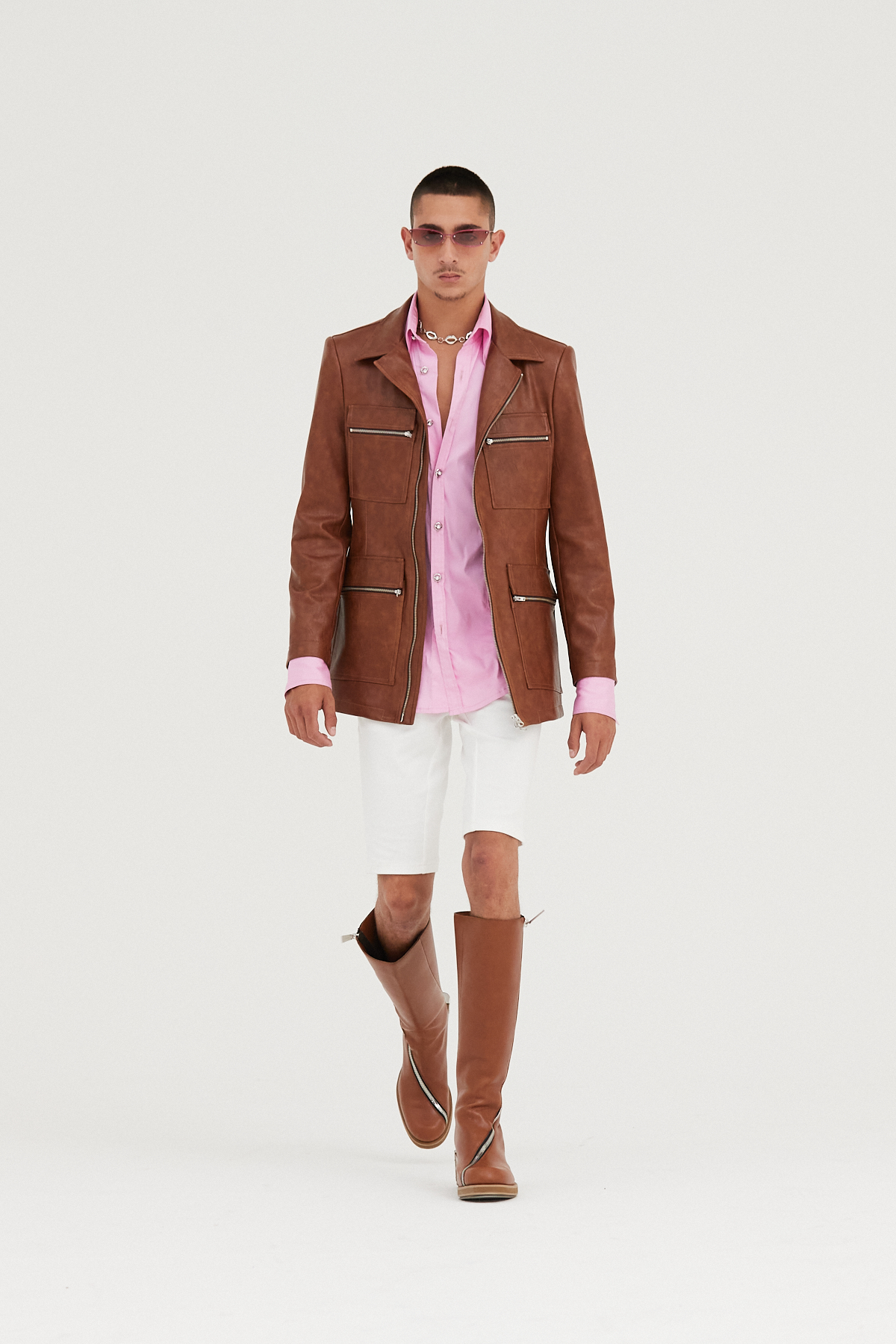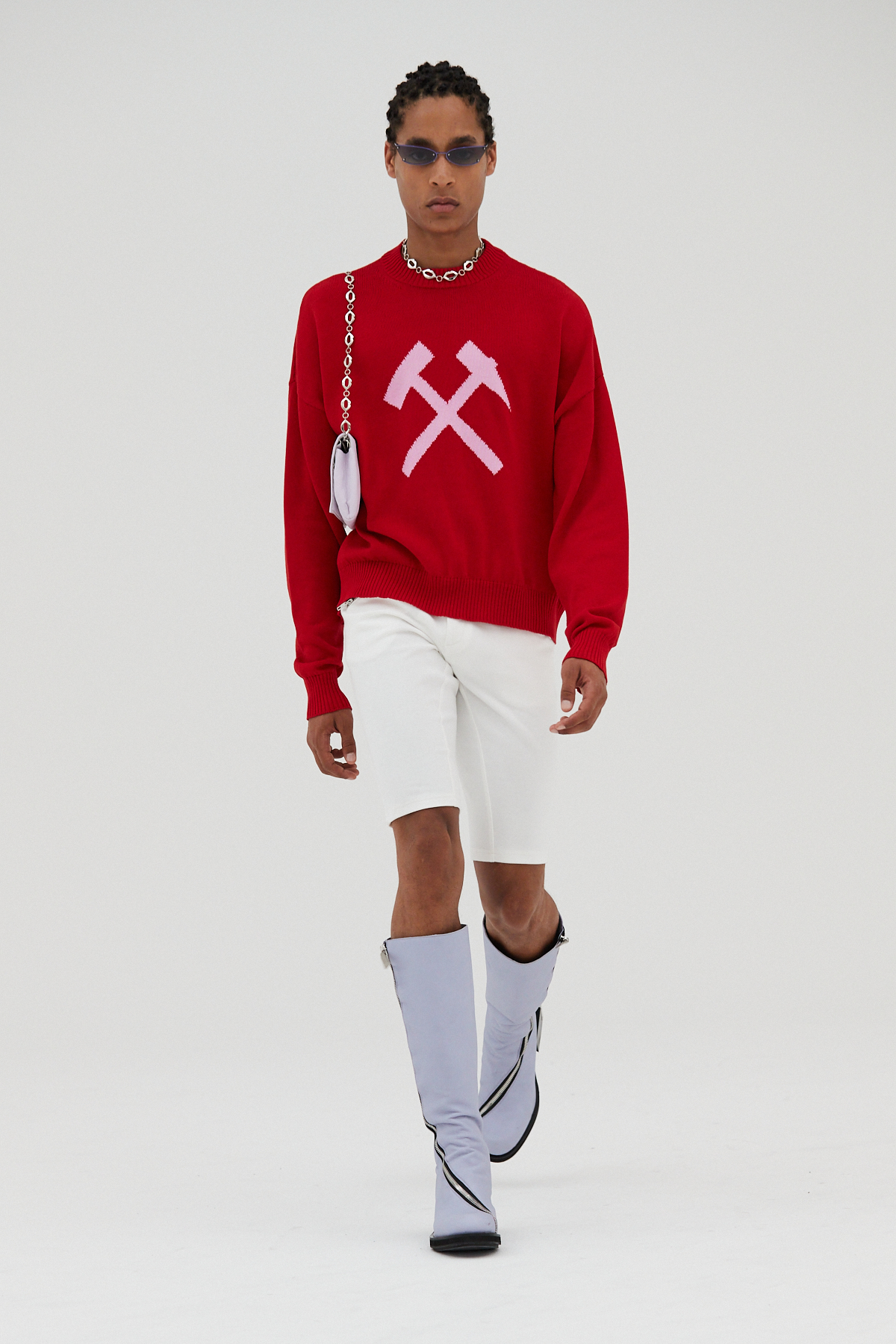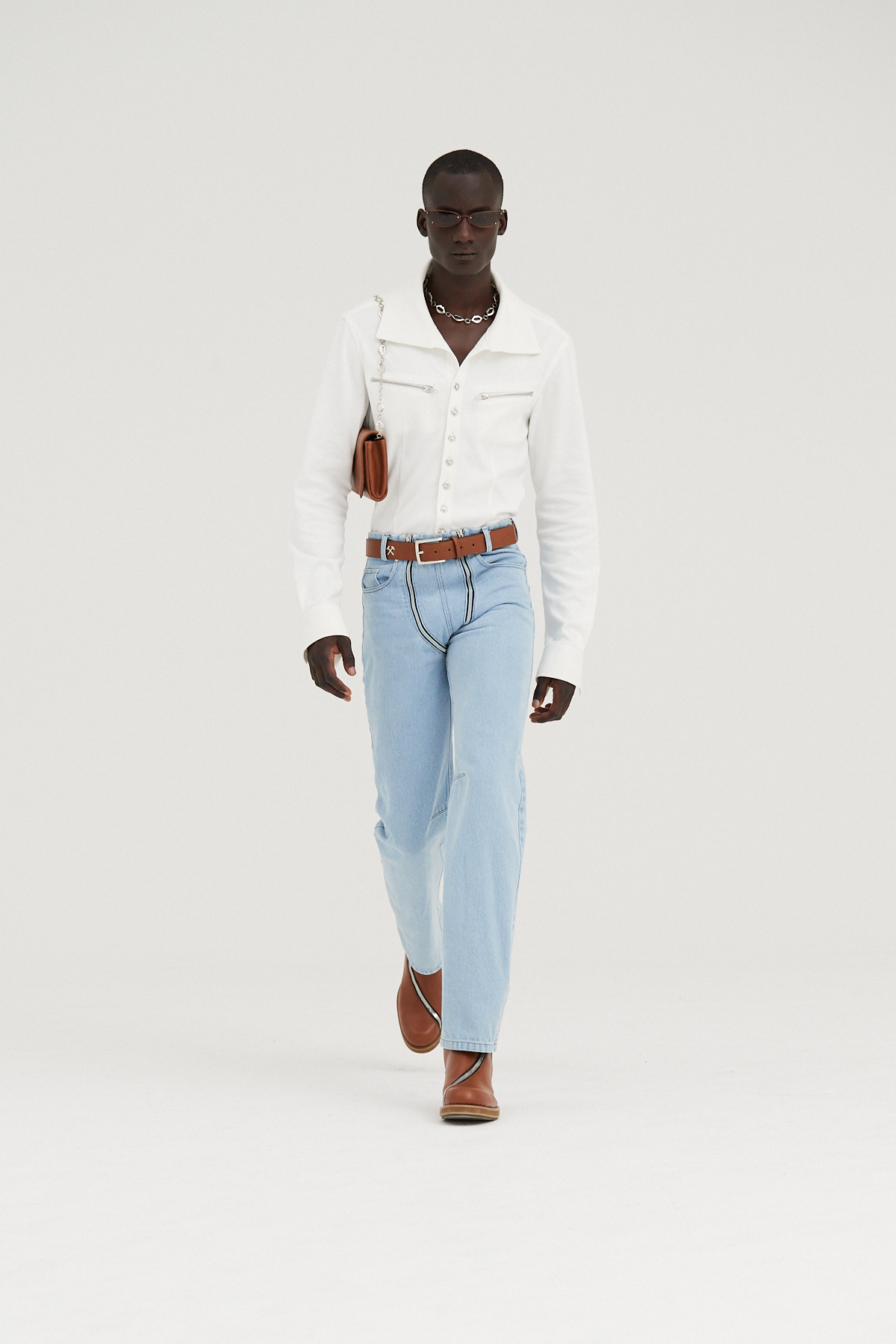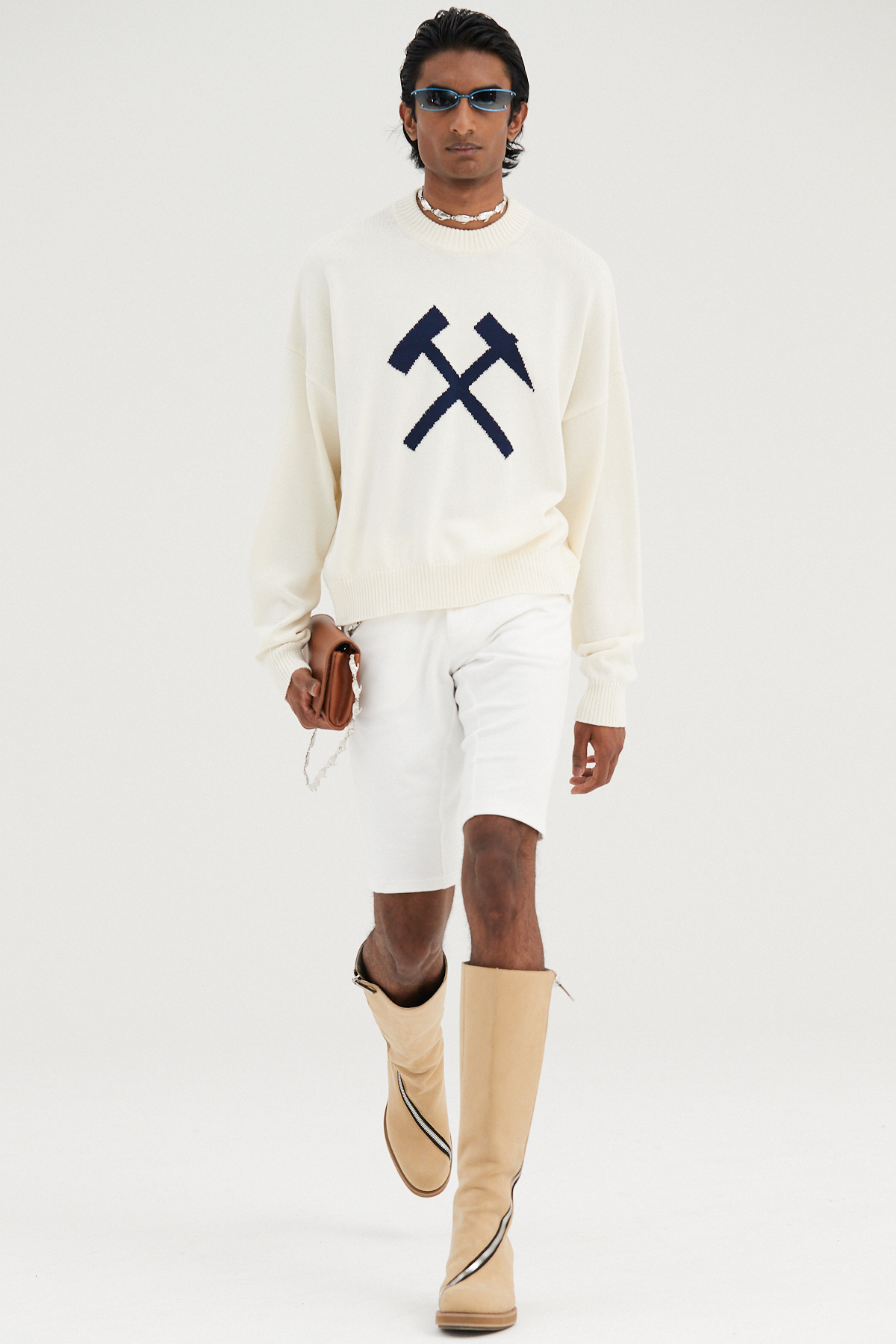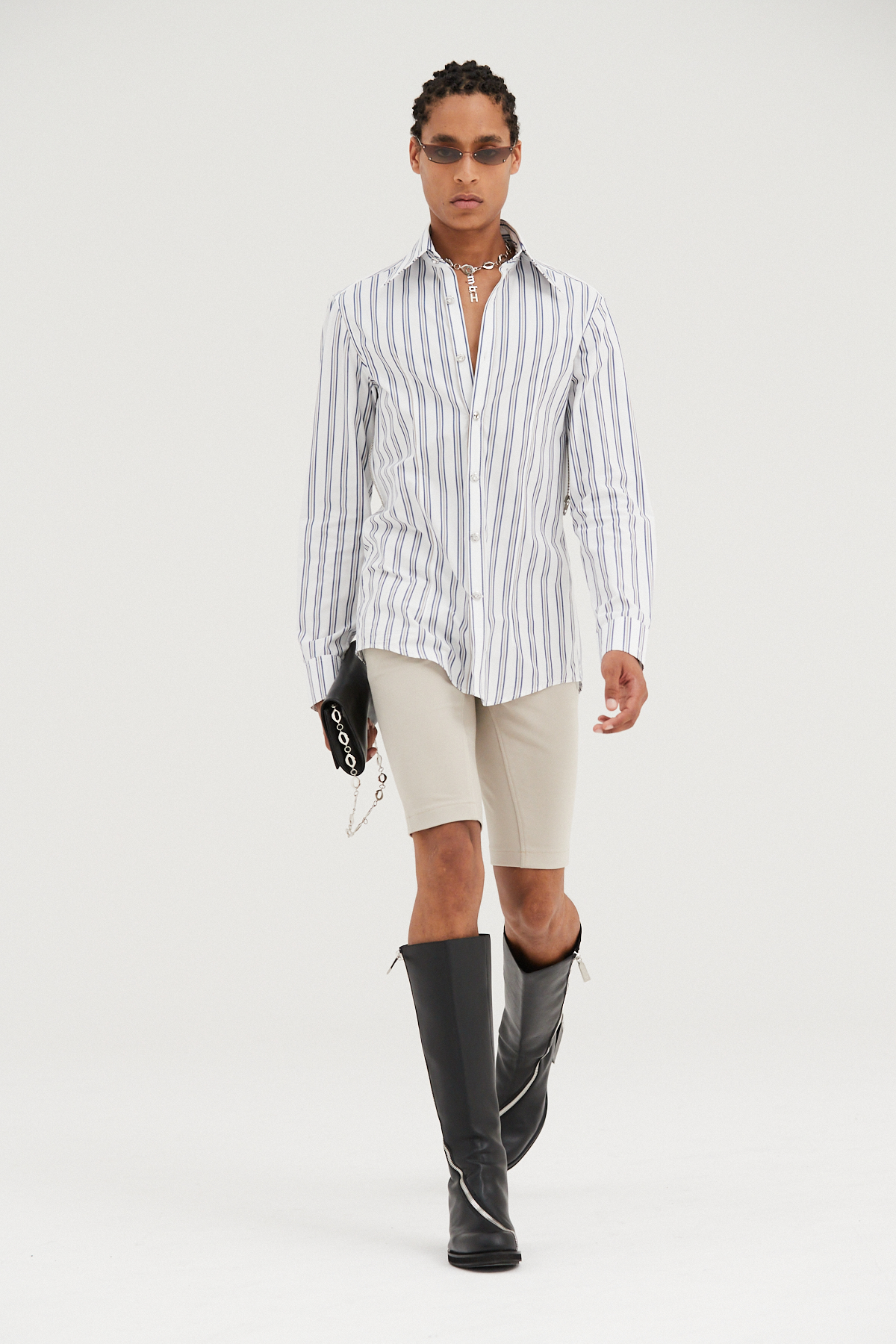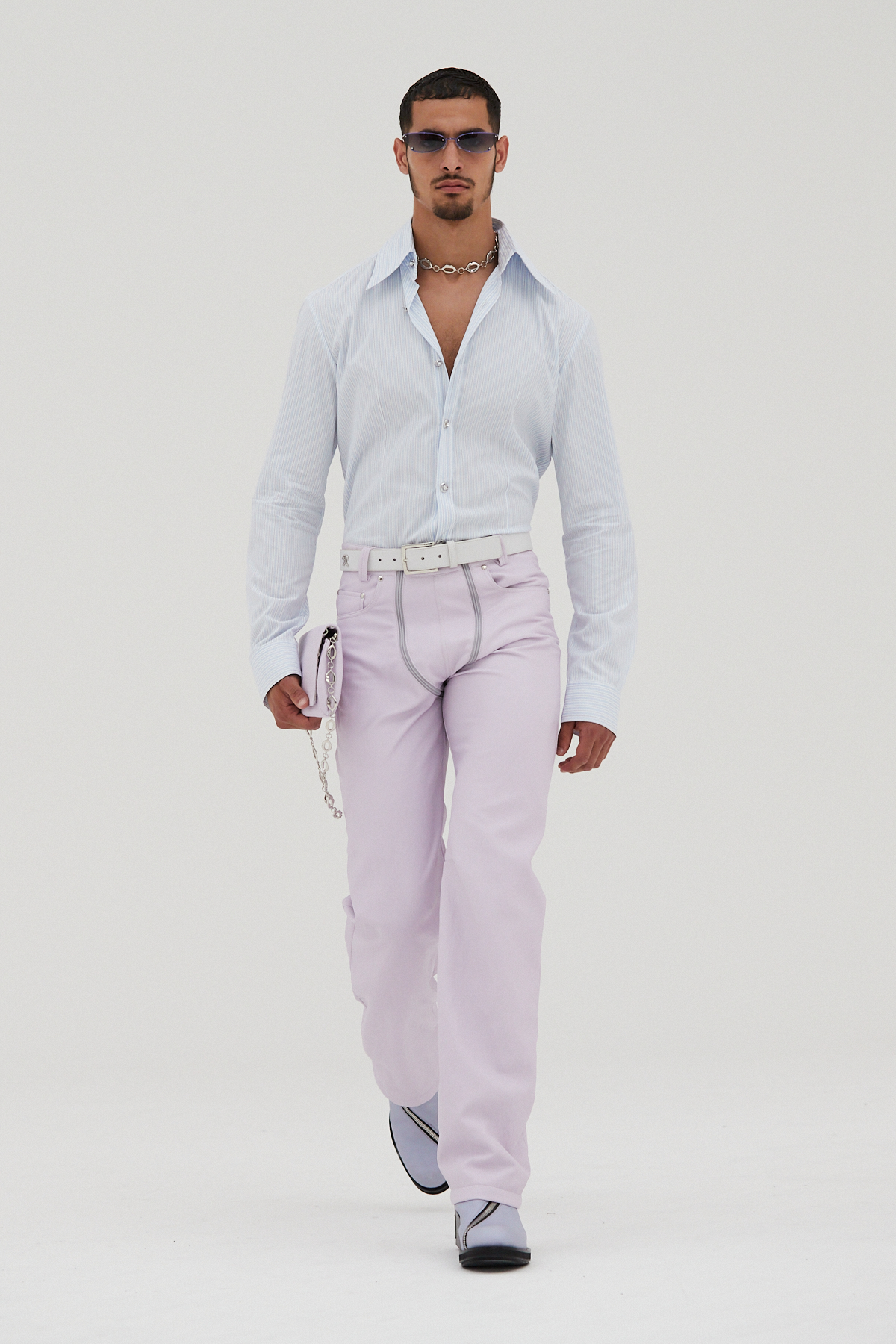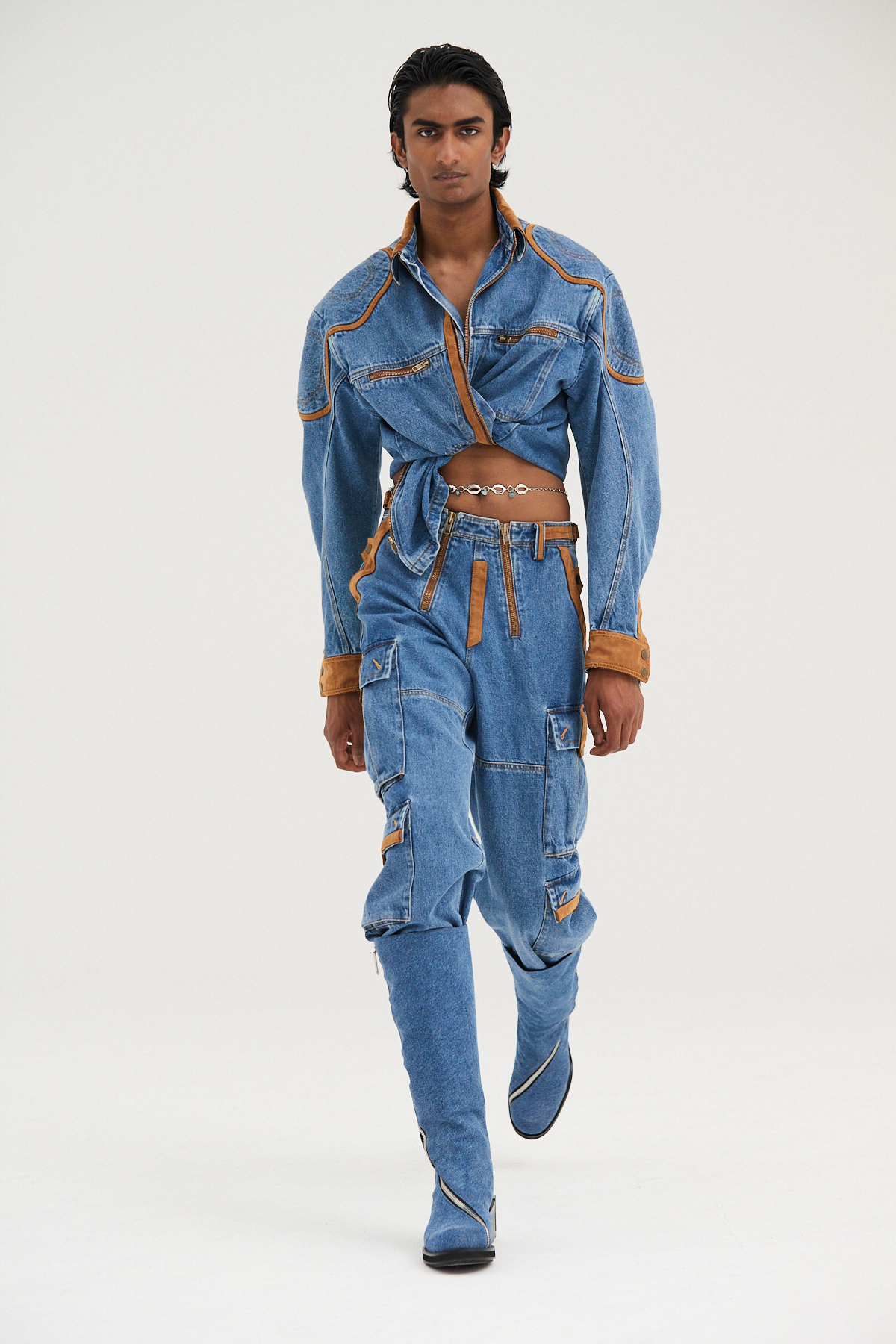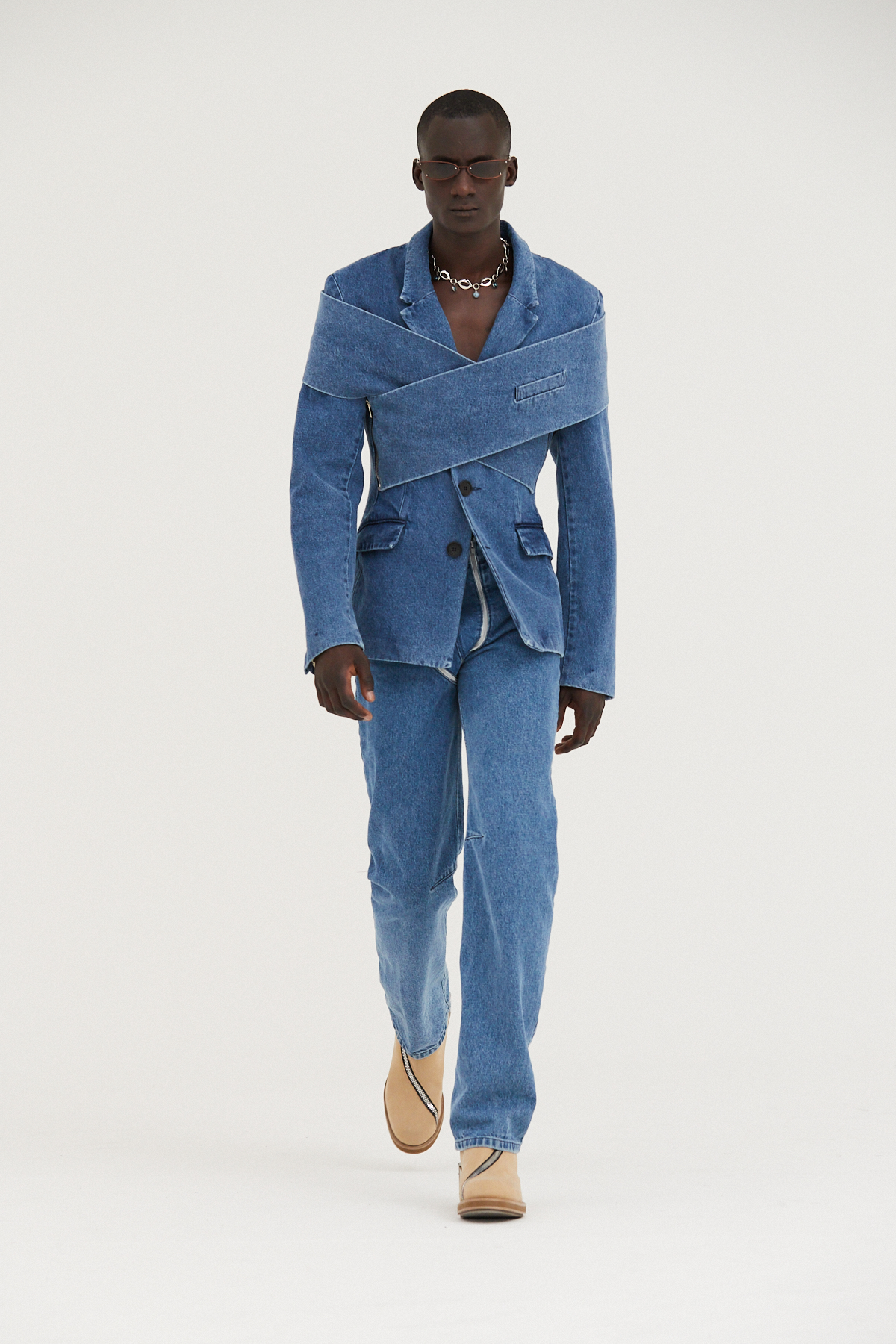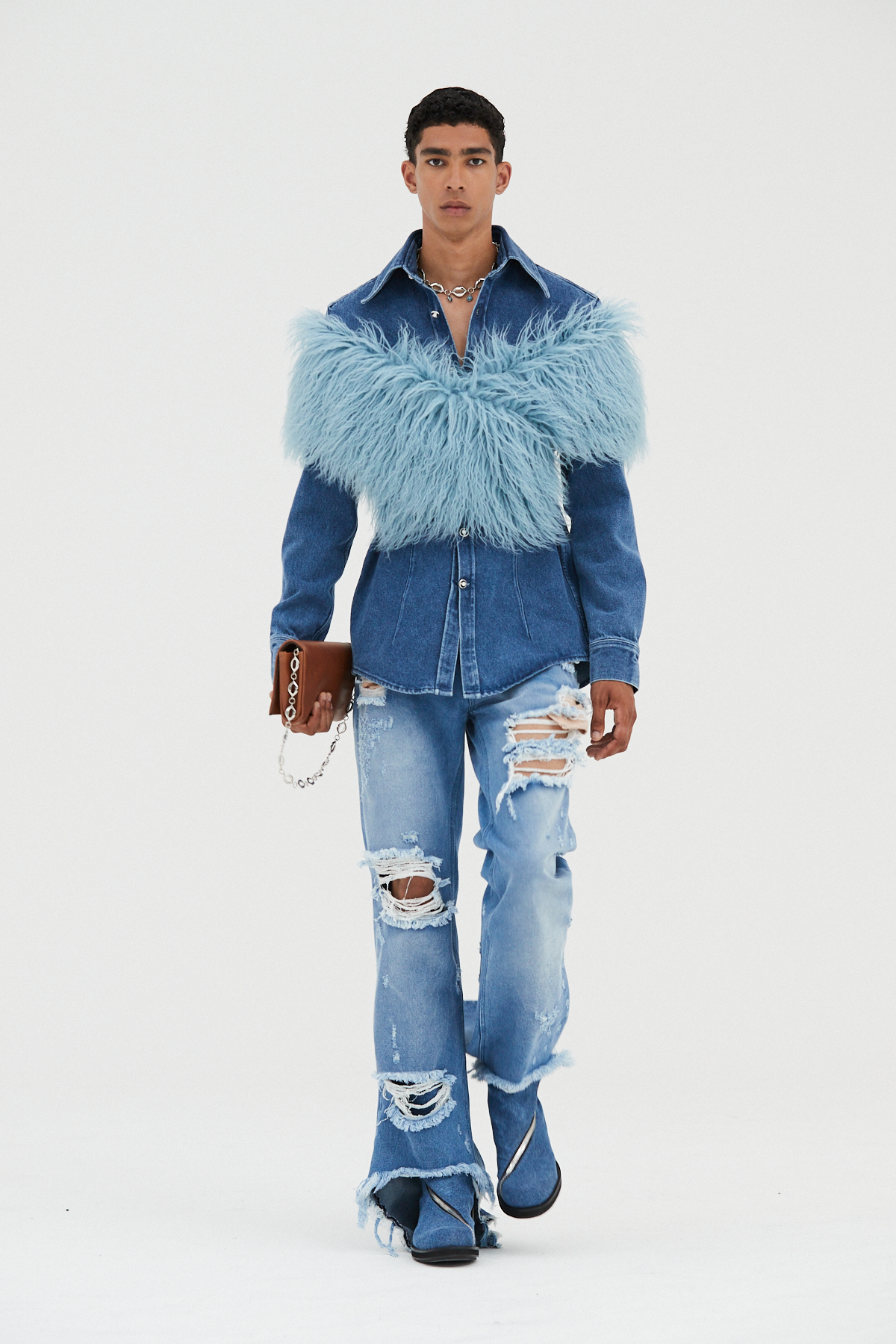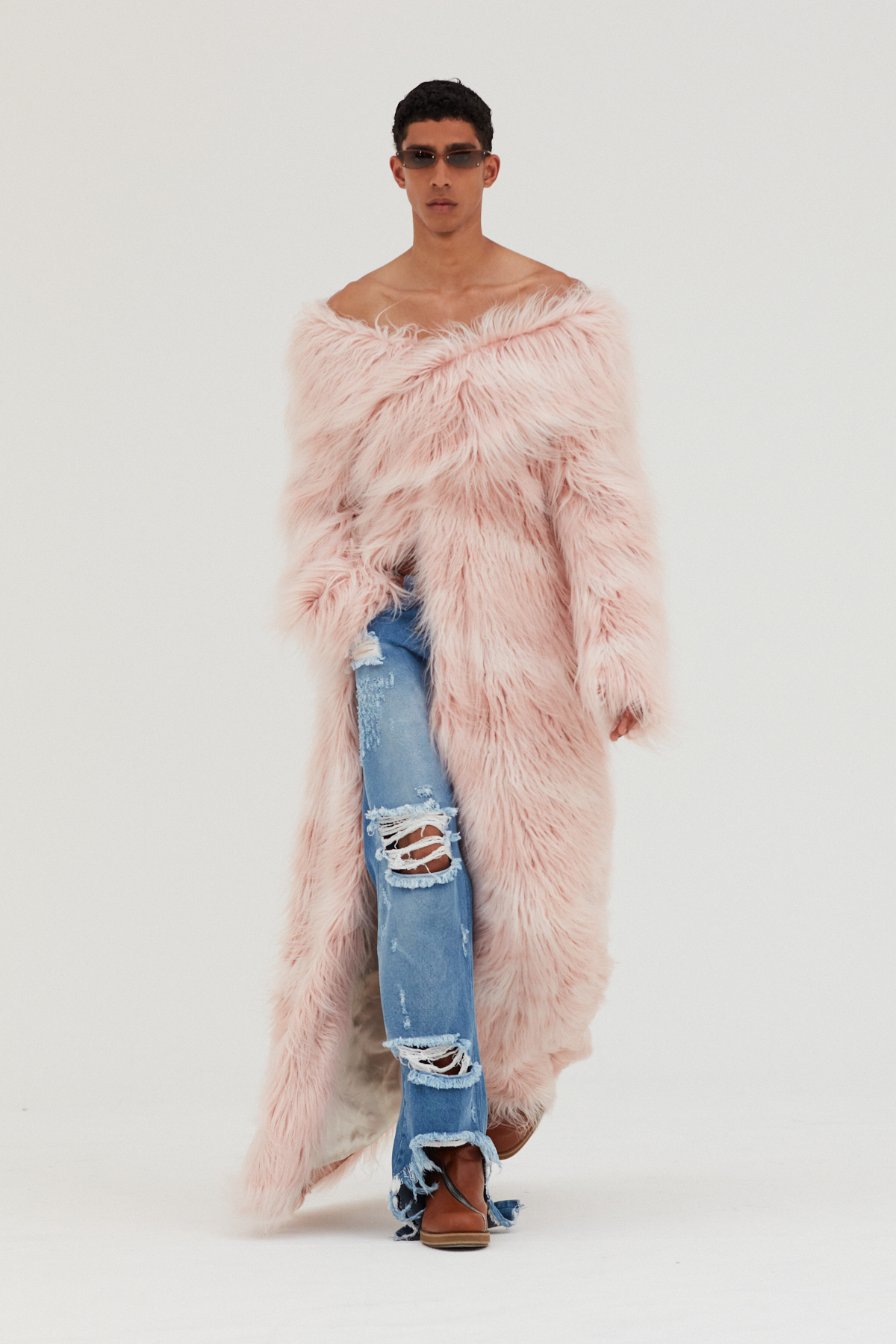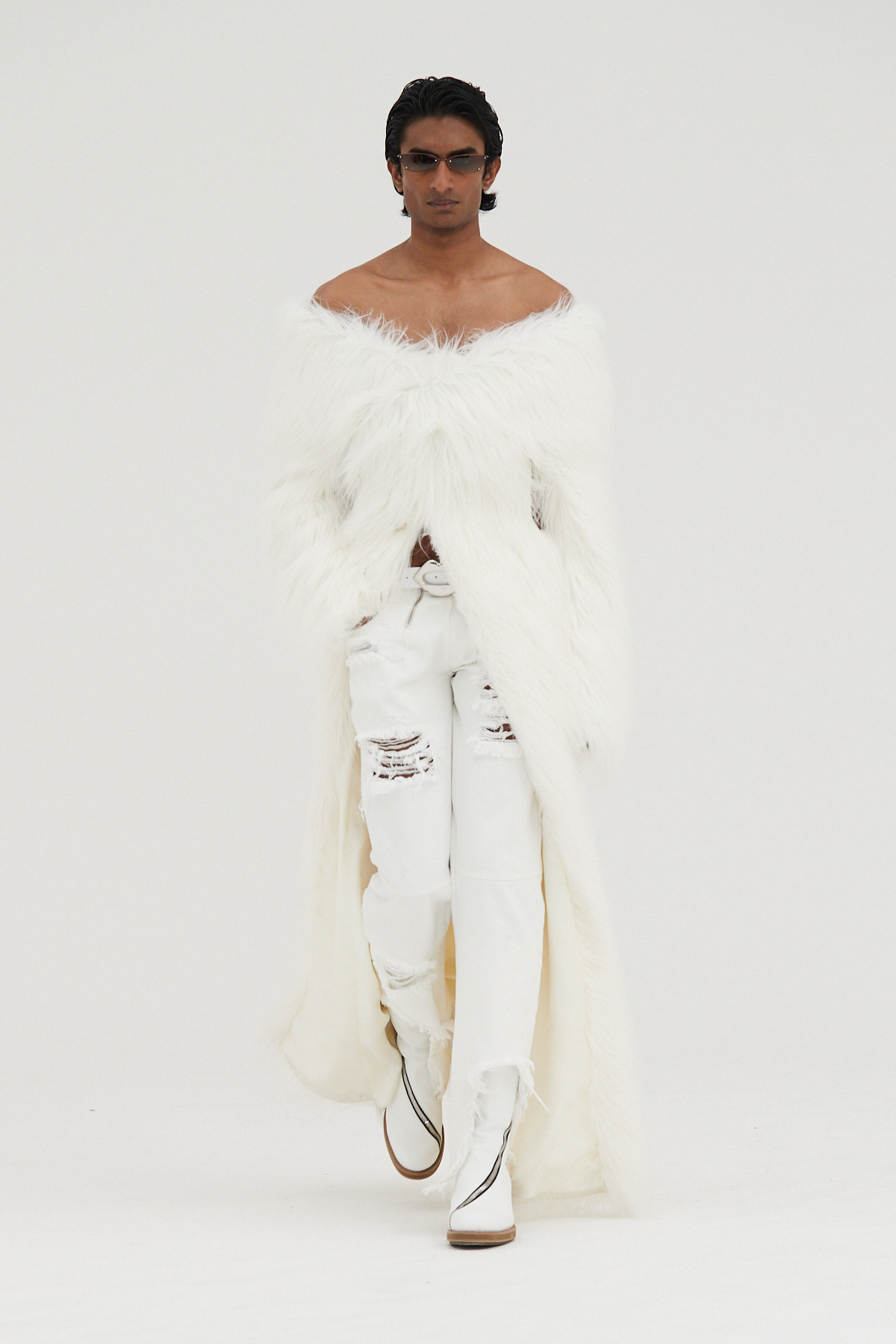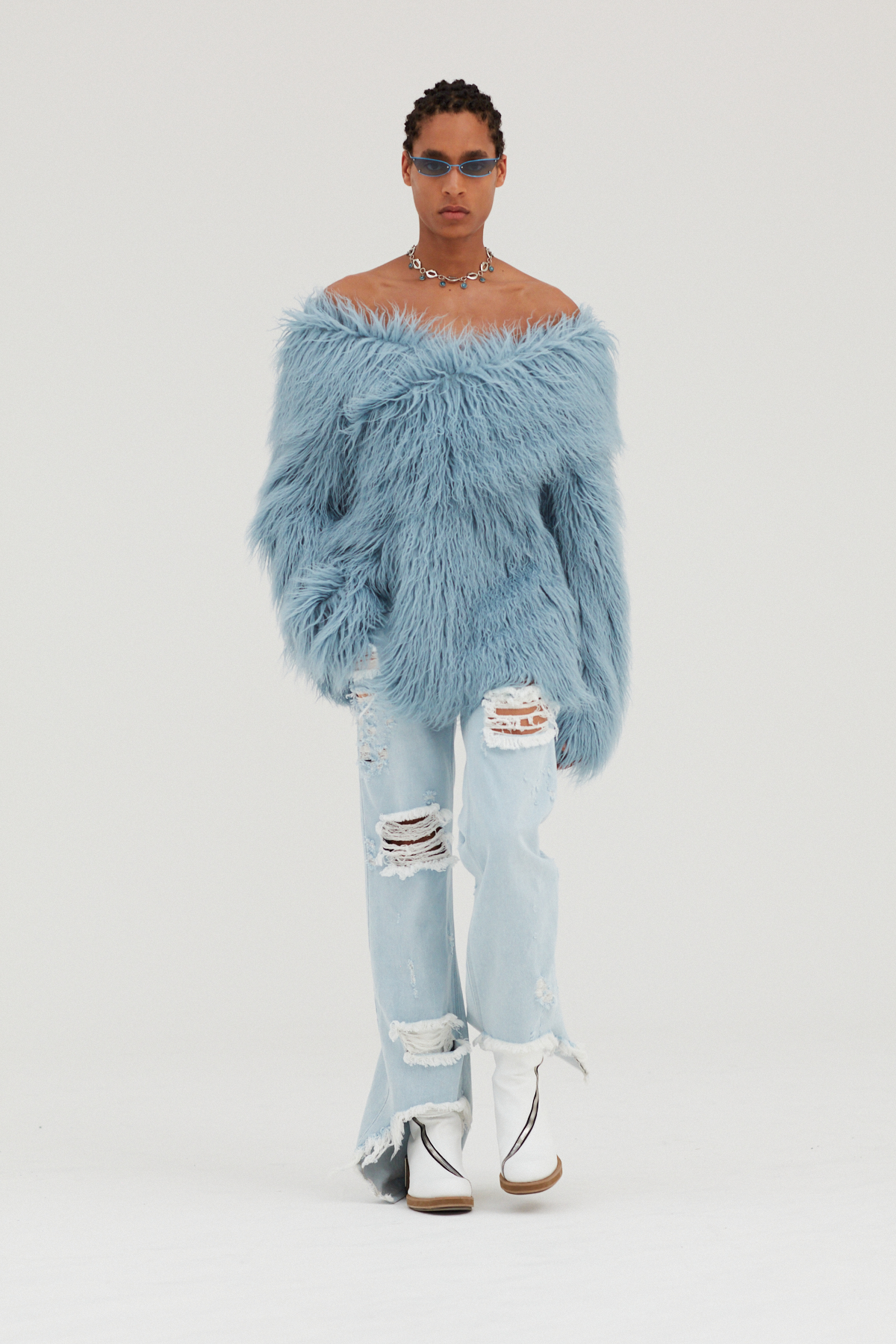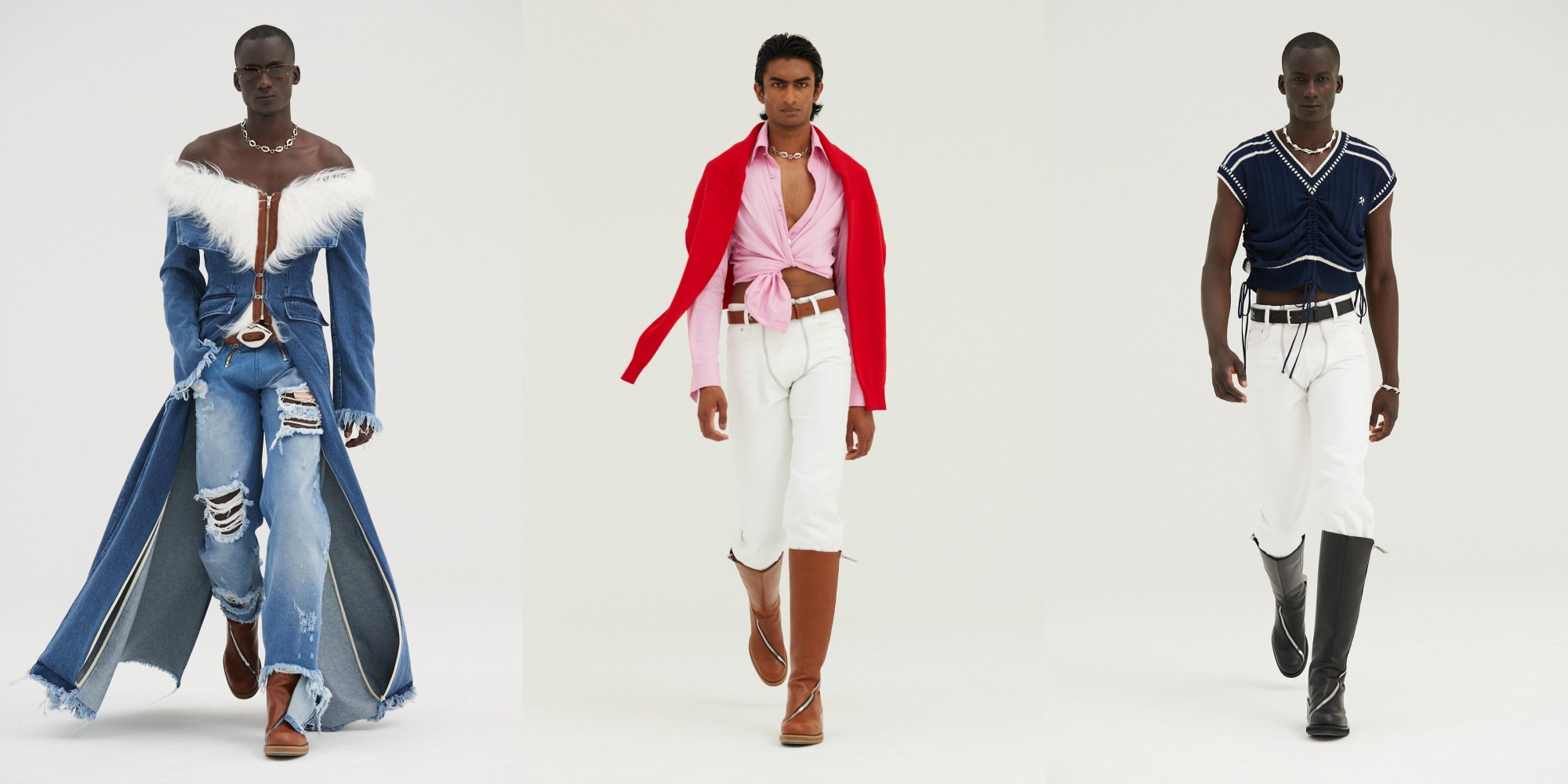For their SS22 collection, Benjamin Alexander Huseby and Serhat Işık of GmbH ask: What does it mean to dress ‘white’? Written down, that may read as a needlessly incendiary question — an antagonistic jibe at the ‘But I don’t see colour!!’-ism of the post-identity age. Since time immemorial, though, white fashion designers have seen colour. They have exoticised and belittled entire peoples deemed other, filtering rich cultural heritages through myopic Western-centric perspectives to create outfits fit for little other than racist cosplay. All the while, in fashion at least, whiteness and its associated cultural capital have remained relatively immune to appropriation — until now, that is.
This season, the Berlin-based duo present White Noise, a body of work that unpicks the seams of whiteness archetypes with elegance, humour, sexiness and wit. It builds on a subtle undercurrent that ran through their AW21 collection — an inquest into how items like jodhpurs and riding boots, Fair Isle knits and sumptuous furs, become coded as the property of a socioracial milieu — rich white poshos, basically — and the subversive power of putting Brown and Black bodies in those clothes.
If the subtlety with which the pair made their point back then slipped beneath your radar, then, darling, you sure as hell won’t miss it now. The white typologies they’ve studied are hardly enigmatic — cropped, ruched knits styled with white double-zip-fly denim jodhpurs and calf-swaddling riding boots give the full polo-player fantasy, while sweaters insouciantly slung over the shoulders of tight, Daisy Duke front-tied poplin shirts suggest the Tillys and Rosies watching the match from the sidelines. Clean-cut denim looks give off an air a nostalgic, blue-jeans Americana, which is neatly compounded by baseball stripes, and sandy shirts worn with brown vegan leather trousers that call a Midwestern sheriff to mind.
As you’ll probably have clocked from the description above, for all the gravity of their chosen subject matter, there’s lightness to Benjamin and Serhat’s work — which is to say that it’s daubed in satire and camp. The archetypes they’ve invoked are, for all intents and purposes, pretty hysterical ones. Through them, though, they manage to parody the ethnographic strategies of white social institutions in a way that’s “almost drag, isn’t it,” Benjamin says. “It reminds me of this scene in Paris Is Burning, where the category is ‘Town and Country’.”
Of course, GmbH is by no means the first to use fashion as a means of interrogating, appropriating, and subverting the cultural authority of whiteness. Among the most notable to have done so in recent memory are the heroes of 90s hip-hop and R&B culture, who took brands, looks and even fabrics that were once synonymous with an ‘aspirational’ white ideal, and made them their own — think Aaliyah and Destiny’s Child in Tommy Hilfiger, or Mary J. Blige’s iconic shredded denim looks. Due homage is paid to this chapter of fashion history in the collection’s closing chapter, a suite of denim and pastel faux-fur outerwear pieces in the viral décolleté-bearing ‘revenge dress’ silhouette they launched last season, spurring the creation of GmbH’s demi-couture line.
That this a collection with cerebral heft to is a given, but for all its cleverness, it doesn’t get lost in concepts. The clothes that we see emerge from the white mist in the presentation film directed by Matt Lambert are accessible and, above all, really fucking hot. Here, Benjamin and Serhat fill us in on the thoughts behind one of the standout menswear collections of the season so far.
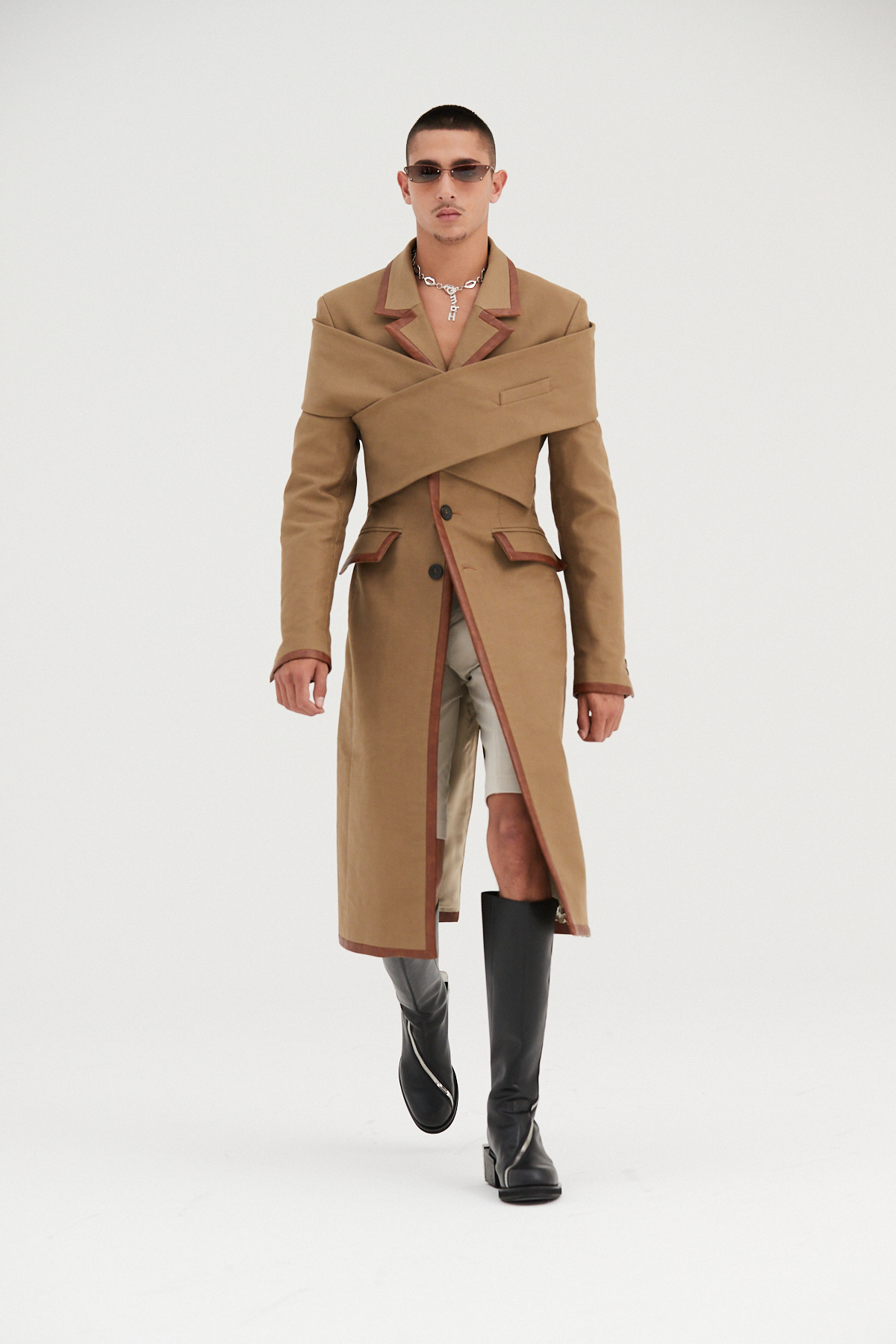
So, White Noise. Tell me about the title.
Benjamin Alexander Huseby: It was partly inspired by this Don DeLillo book that I recently re-read. It touches on a lot of angsty suburban subjects around death and the banality of everyday life, which felt very connected to our lives now. On a more thematic note, though, our collections have always been very reactive, responding to how we felt and what’s happening in the world there and then. This time it was more about an interest in studying what whiteness and white culture really are. As BIPOC, we constantly have to deal with our own Brownness, our Blackness — we have to constantly defend it and investigate it — and white people don’t have that. They don’t have to think about whiteness because it’s just there, it’s kind of just considered the default.
Serhat Işık: It’s an exploration that we actually started last season, but not very many people picked up on the codes we were hinting at — horse riding, skiing and all these activities that are normally, well, not necessarily reserved for, but are known to part of upper-class white culture.
BAH: Yeah, this very WASPy, country club fantasy
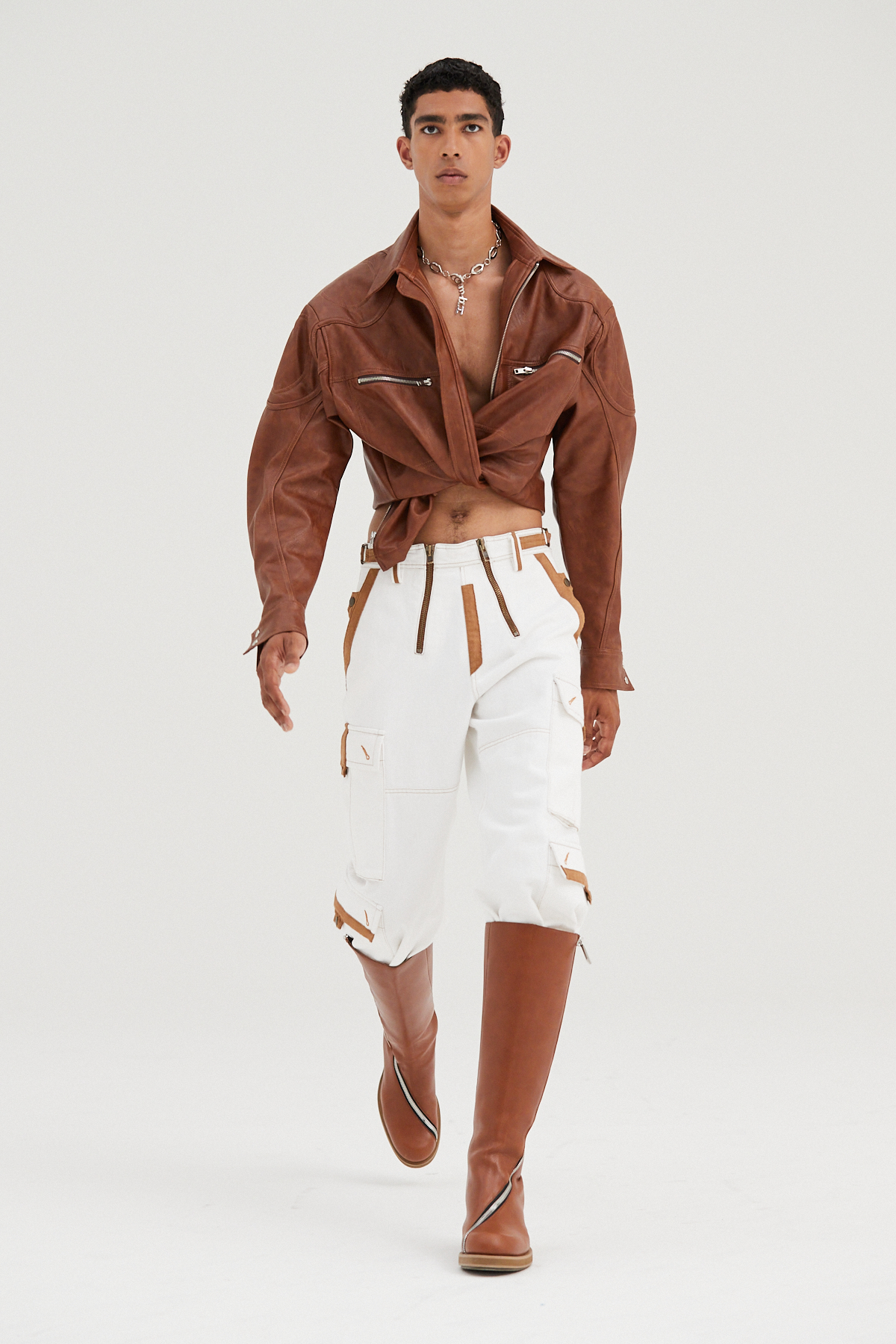
SI: Somehow, it wasn’t evident enough for people to really get, so this season is basically us making it crystal clear! GmbH as a project has always about decolonizing our minds, through fashion, and in collaboration with our community. We’ve always been expected to describe our cultures — and that’s a big part of what we do and what we’ve done so far. But the culture we’re exploring here is the one that we were born into, and yet have always been told we’re not part of. We wanted to explore what it would look like for a brand like GmbH to flip things around and appropriate white culture.
BAH: It’s important to say, though, that that’s done with a bit of twisted humour. And also that it’s not only about whiteness — trying to understand the tropes and archetypes of this American Dream ideal of white culture was our starting point, but then we also went back to something we’ve always been interested in — exploring how Brown and Black people have historically appropriated or subverted white culture. This was very clear for us growing up in the 90s, it became a very influential thing in music culture, for example
Yes, there’s a switch around look 20 where it started to remind me a little of Janet Jackson and Mary J. Blige. But what fuelled your interest in exploring how figures like that subversively engaged with whiteness in the 90s next to the wealthy white archetypes we see in the earlier looks?
SI: For me, it was really about shifting the narrative. Working in a post-identity age, I feel like there’s so much noise out there that I almost wanted to withdraw for a moment and focus on putting something out there that’s different to the conversations we’ve been having since even before we started GmbH. We always say fashion is a tool that we use to raise awareness or talk about the things that we want to talk about, so we needed a moment to regroup and rethink how we could continue doing that without doing the same thing. That’s what personally drew me to continuing to research this topic, and to really flip it around. Even if someone came along and said, “Oh, now they’re appropriating white culture?!”, that’s already a different conversation, and it’s one that I’m interested in listening to as it plays out. I’d rather that than, ‘They’re celebrating their culture! I love the Middle Eastern patterns!’, because that’s what’s always expected of us. And it’s beautiful, for sure, but now, let’s fuck things up!

BAH: I think we’re all just exhausted with constantly having to deal with our own identities.
SI: There’s also a point at which I get bored of it. It’s almost like we’re expected to play into this narrative of presenting one Middle Eastern, queer-inspired collection after another. But now we’re saying: No — let’s talk about you. Let’s talk about whiteness. Let’s talk about us appropriating your culture, and let’s see how you react.
BAH: And if we talk about race and colour, one thing to acknowledge is that we didn’t name ourselves ‘Brown’ or ‘Black’. That naming is the product of a white colonial culture — so maybe whiteness is the problem. Maybe that’s what we need to understand and explore.
Here you do that by looking at white typologies, but you do it with quite a light touch. Some of it is really camp — there’s varsity polo match realness, the baseball player, the cowboy, Daisy Duke… What drew you to the specific archetypes you explored?
SI: In some ways, it was because they were so obvious. And because codes are so important in what we do, especially codes that have been used to oppress people of colour, it’s also about investigating where power lies. On another level, though, we also just wanted to show everyone how we could make these archetypes look really sexy in a way that perhaps don’t expect.
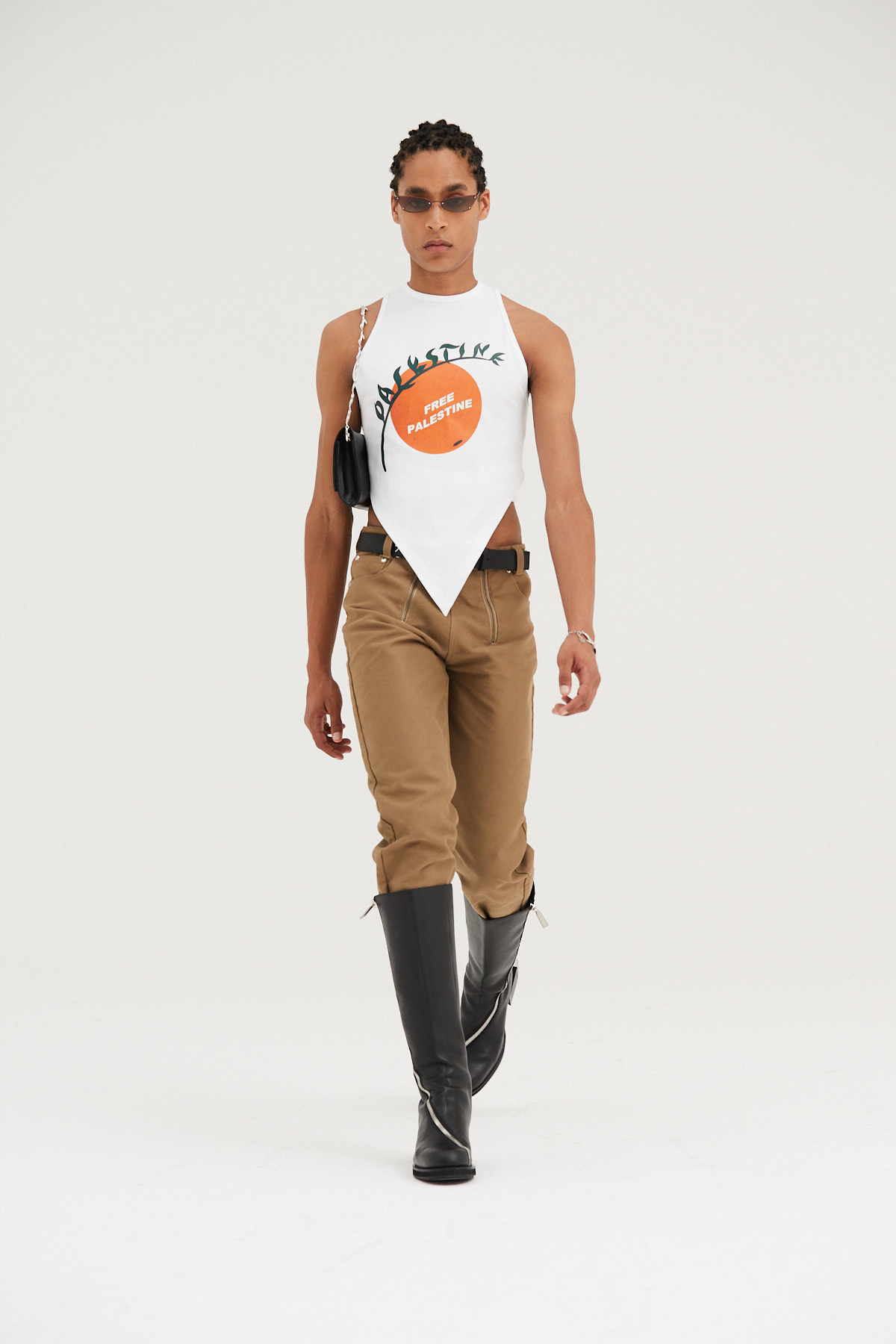
Another key feature this season is your collaboration with queer Palestinian label tRASHY CLOTHING. Tell us a bit more about it and how you started working together.
BAH: It’s run by Shukri Lawrence and Omar Braika, two Palestinian guys based in Jordan. They reached out to us a while ago, and we began a conversation about doing something together. They’ve amassed a lot of research into all sorts of Palestinian graphic design, both political and non-political, and we decided that it would make sense to do something in our show — to have a very visible t-shirt that said Free Palestine. The T-shirt is for charity, but I think it’s important to point out that that’s not what Palestinians are primarily asking for; they’re asking for solidarity and visibility, and for their voices to be heard. We felt that putting a very simple statement in a fashion show was one of the ways we could help to keep that conversation going. It’s a very critical situation, and for the first time in my life, I feel that the mainstream narrative is shifting. We want to keep that conversation and momentum going no matter what.
SI: That’s what’s so great about fashion, and it’s one of the things we love about it — there’s a banality to it, but it’s so immediate.
